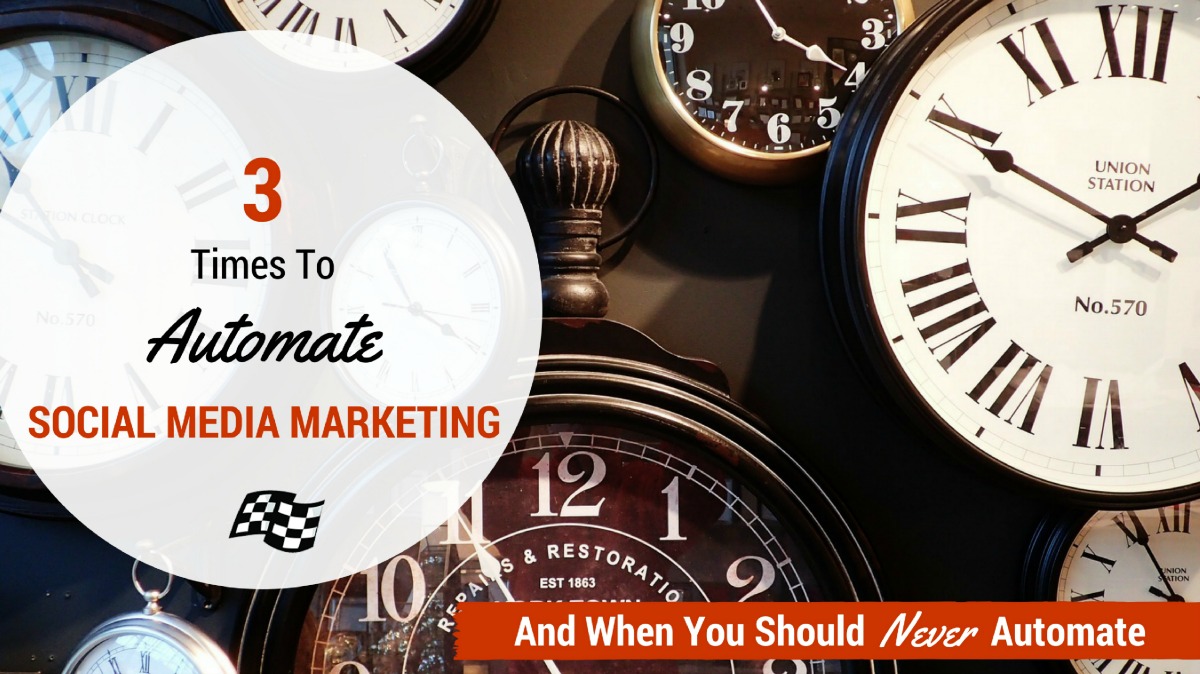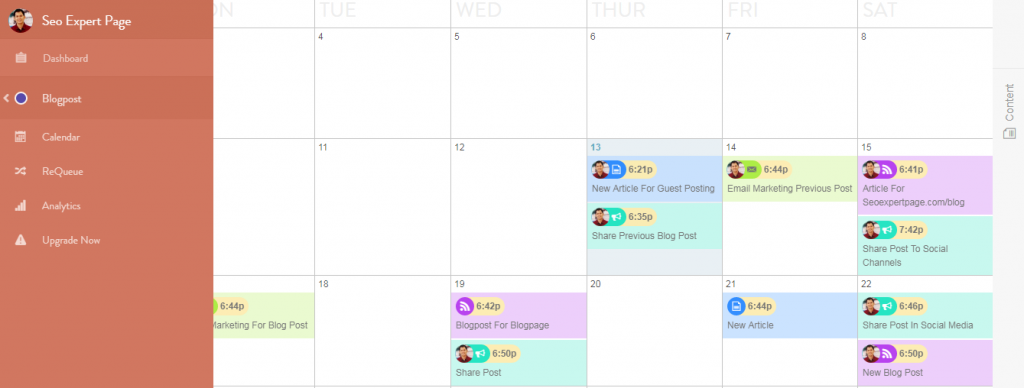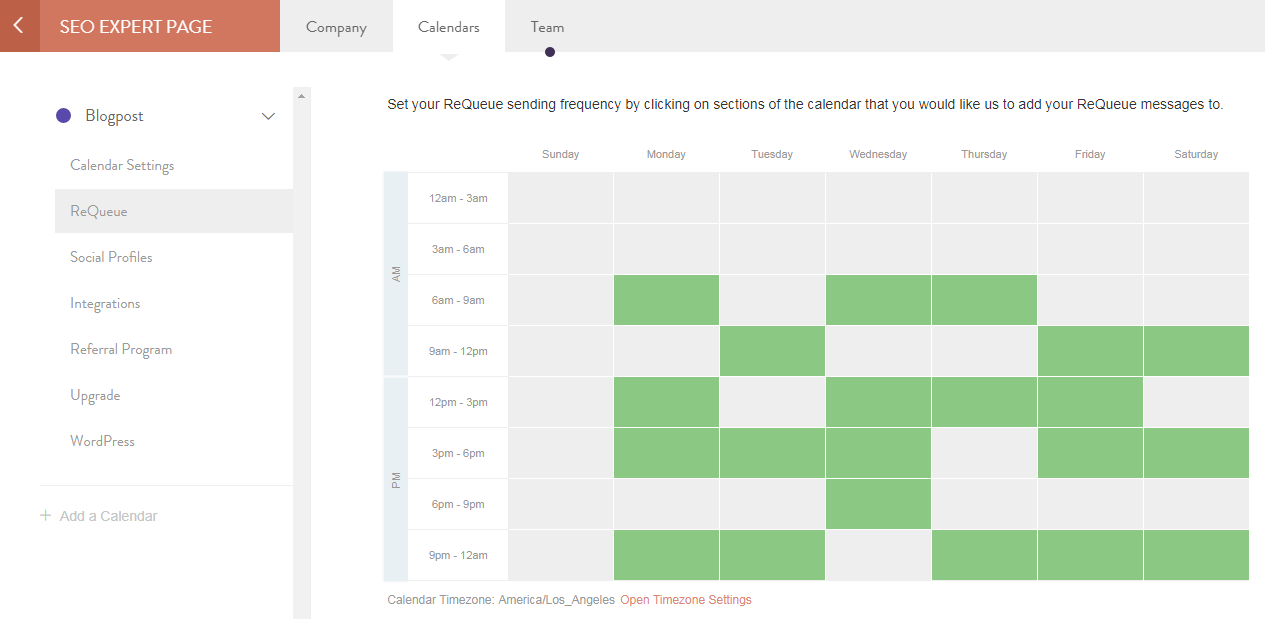
As a marketer, you certainly know how crucial social media is for marketing. With nearly 2.8 billion active social media users globally, it presents a huge opportunity to expand your business’ reach and growth.
However, social media marketing isn’t easy. It takes a lot of time and effort to do it right. That’s why most marketers automate their social media marketing.
The effectiveness of social media automation has been debatable. You probably know some people who made automation work for them while others have failed. But have you ever thought that perhaps the issue is not whether or not social media automation really works? Maybe it’s a question of when to use it to get the biggest benefit.
So to help you, here are some tips on when you should and shouldn’t use automation for social media marketing.
You Should Automate When…
1. You Want To Keep Your Channels Active
The first rule for successful social media marketing is to be active. This is the basic way for your brand to get noticed. But unless you have a dedicated social media team to promote your business in various social media channels at any hour of the day, it’s nearly impossible to keep your social media channels active. That’s when automation comes in handy.
Different social media channels like Facebook, Twitter, and Instagram have different kinds of audiences. These users don’t access their channels at the same time. If you want to maximize your reach, you need to connect with these users at the best time possible. With automation, you can schedule your social media updates so they will be posted at the best time to get the best results.
What’s the best time to post? According to Hootsuite, these are the best times to post on Facebook, Twitter, and Instagram:
- Twitter – 3 p.m. (Monday to Friday)
- Facebook – between 12 p.m. and 3 p.m (Monday, Wednesday, Thursday, and Friday) and between 12 p.m. and 1 p.m. (on weekends)
- Instagram – 12 p.m. to 1 p.m. (Monday to Friday)
These times are a good place to start, but keep in mind your audience may be different. Try scheduling posts at these times and then adjust based on the engagement you are seeing.
Face it, marketing is a busy job. You have other things to do, so you can’t spend a ton of time on social media. Scheduling your content and updates ahead of time creates the illusion that you’re active, even when you’re not.
2. You Want To Sync Your Content
When you publish great content on your website, you obviously want to share it out to your social media audiences. Automation tools make this seamless.
CoSchedule, for example, has a content management tool, a drag-and-drop WordPress calendar which allows you to put your social media and content together. This will allow you to integrate and sync social media schedule with any type of content you create.

Moreover, you don’t have to manually reschedule your content. By dropping the content you want to reuse to ReQueue, your content will be automatically rescheduled even if you don’t open your calendar.

Timing is everything if you want to get the most out of your content. Aside from powerful website communication and integration tools, automation can also help you find the right timing to send the right content to the right audience, thus, increasing your content’s performance.
3. Track Your Progress
Often times, with the lack of control over the time and frequency in marketing to different channels, you may find yourself bombarded with random numbers of likes, clicks, or visits, and you have no idea when and where they’re coming from.
Using an automation tool provides a more organized way of implementing your social media campaign. You have a record of when and where you posted different updates. Most automation tools, such as Buffer, will provide analytics and information on your most popular posts.
With this information, it’s easier to track the progress of your content. You can monitor whether certain contents work well or whether you are receiving enough engagement from a specific post. You can then get cues on the frequency and specific time you can get the best response for your content, allowing you to modify your strategies to improve and get better results.
The One Thing You Should NEVER Automate
Automation can be the spring board to genuine engagement with your audience, providing content for your followers to share and respond to. But don’t be tempted to automate your responses to those engagements.
Real-time engagement should NEVER be automated. When someone responds to a post, respond personally and try to continue the conversation. Social media users are savvy and can spot an impersonal, automated response from a mile away. Automating responses is a great way to stop engagement dead in its tracks.
Moderation Is The Key
Social media automation can be a useful tool for your business. But it’s up to you to decide how you can use it to your advantage. Don’t automate every activity you do in social media. You still need to give it a personal touch.
As with so many things in life, moderation is the key when it comes to social media automation. You don’t need advanced analytics to determine whether you need automation for certain social media activities or not. You just need to know your purpose, use your common sense, and you’ll be able to use social media automation at its full potential.

2 Responses to 3 Times to Automate Social Media Marketing…And When You Should NEVER Automate